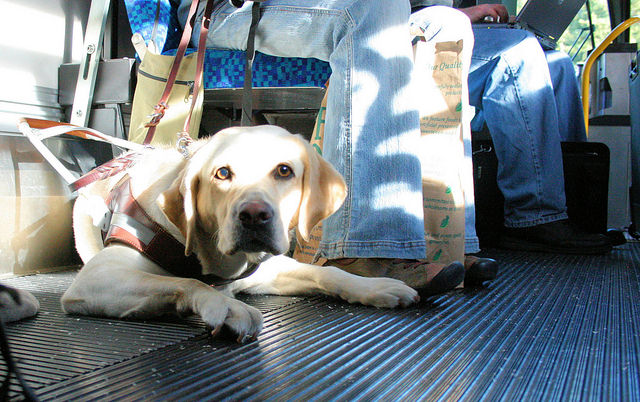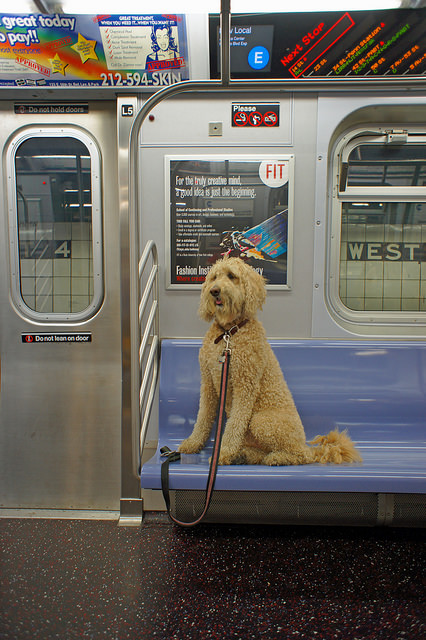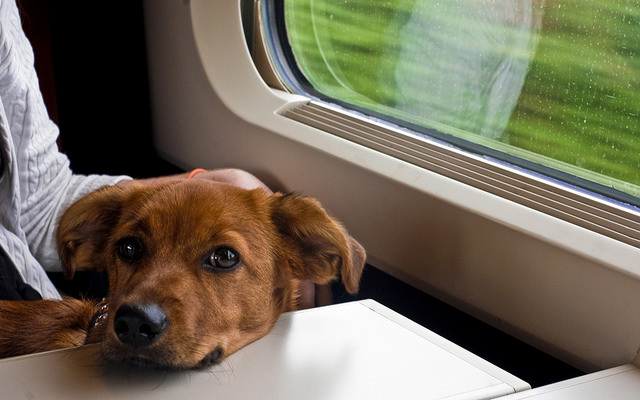Taking your dog to the vet or on a special trip to the dog park gets a lot more complicated when you don’t own a car. Having a vehicle isn’t a requirement of having a pet, and countless dog owners rely on public transportation to get them and their pups from place to place. Whether it’s a bus, train, or subway, taking your pet to places outside of walking distance doesn’t have to be a stressful endeavor. If you follow these tips, your dog will be safe and comfortable regardless of where you need to go.

#1 – Know Before You Go
Rules differ depending on the company and type of vehicle. If you’re not prepared, you could be turned away by the driver. A quick internet search or phone call should get you the information you need. You’ll need to know whether non-service animals are allowed on board and if there are size restrictions. Also, check to see if you’ll need to pay a fare for your dog and if there are restrictions during heavy commute hours.
#2 – Travel Prepared
If your dog is small enough, it’s usually best to bring them in a carrier. But if your pup is too big, keep them on a short leash. Having a few extra treats and a toy in your bag will also come in handy. Use the treats as motivation to encourage good behavior. If you have a toy your pup likes to quietly chew on, you can use it to keep him busy during longer commutes.

#3 – Be Respectful
Some people are afraid of dogs, some are allergic, and then there’s always the random person who is simply offended by all canines. It’s your job to ensure your dog’s presence doesn’t interfere with anyone else’s commute. Don’t let them take up an entire seat if the space is crowded, and keep them from rummaging through other people’s personal belongings. If someone wants to pet your dog, it’s up to you to give permission, but don’t assume everyone is okay with your pup soliciting for attention.

#4 – Keep Them Comfy
You’d rather not spend an entire trip on an uncomfortable seat or wedged into a tight space, and neither does your dog. If they’re small enough to sit in your lap, keep them close and cuddled up to you. Try to find the least crowded area of the vehicle where they won’t be accidentally jostled or stepped on. You should also make sure their collar or harness fits correctly, and if they’re in a carrier, they should have room to stand and stretch.
#5 – Make The Trip Worth It
If you plan on taking your dog on public transportation on a regular basis, he’ll be more cooperative if he enjoys the experience. Only using the bus to take your dog to the vet, for example, might not go over well with your furry travel companion. He’ll start associating the bus with the negative experience of going to the vet, and knowing what’s coming at the end of the line could cause behavioral problems. Even when the vet is your final destination, make the trip a positive experience by also stopping at the park or giving them a new toy.
Featured Image Source: Flickr/Richard Masoner/Cyclelicious
